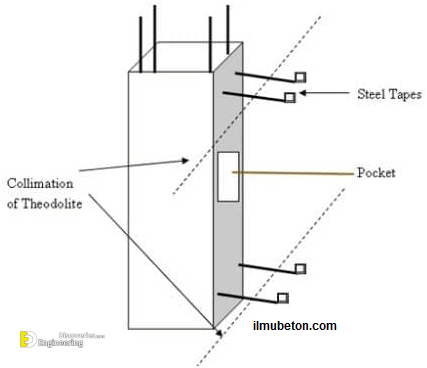Checking verticality works would encounter during building construction at several stages such as during installing vertical formworks of columns and transferring levels up successive floors of multi-story structures. Various methods which to control or check verticality works during building construction are discussed
Methods used to check or control verticality works include
1- Plumb-bob technique.
2-Spirit level.
3-Theodolite.
4- Optical plummet.
1- Plumb-bob technique
2-Spirit level
3- Theodolite
The procedure used to check column verticality
4- Optical plummet
It is an instrument that sight directly down or directly up. Optical plummet has an automatic compensator which increases its accuracy significantly compare with other methods used for controlling verticality.
Click Here To See Pile Foundation ,Classification Of Pile Foundations,Pile Installation Methods














